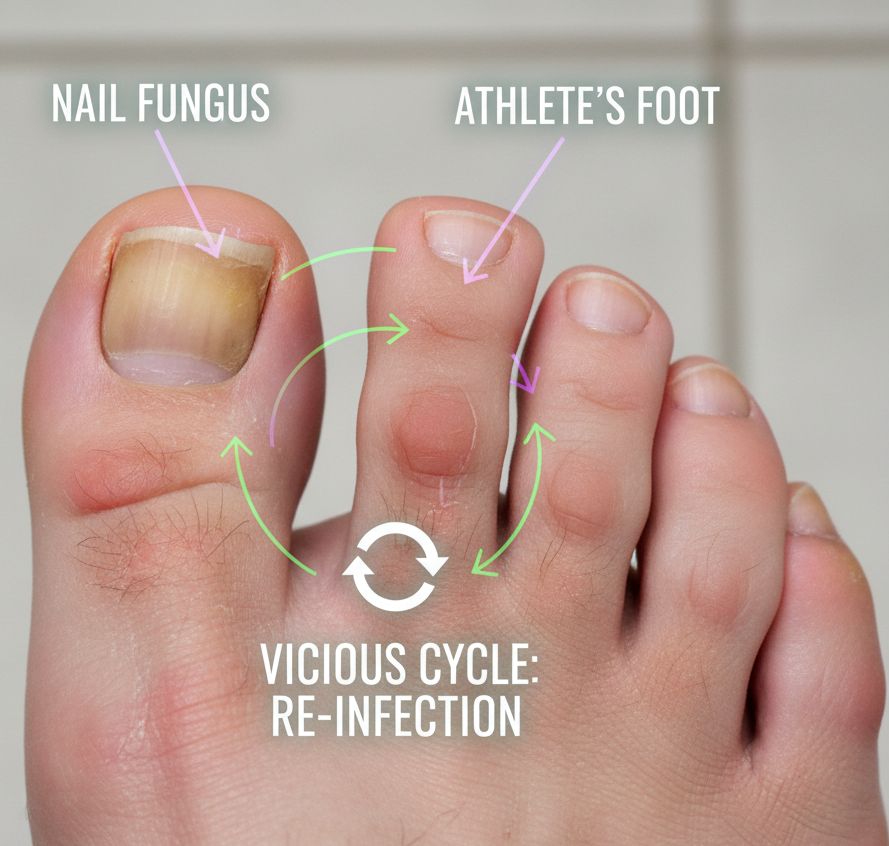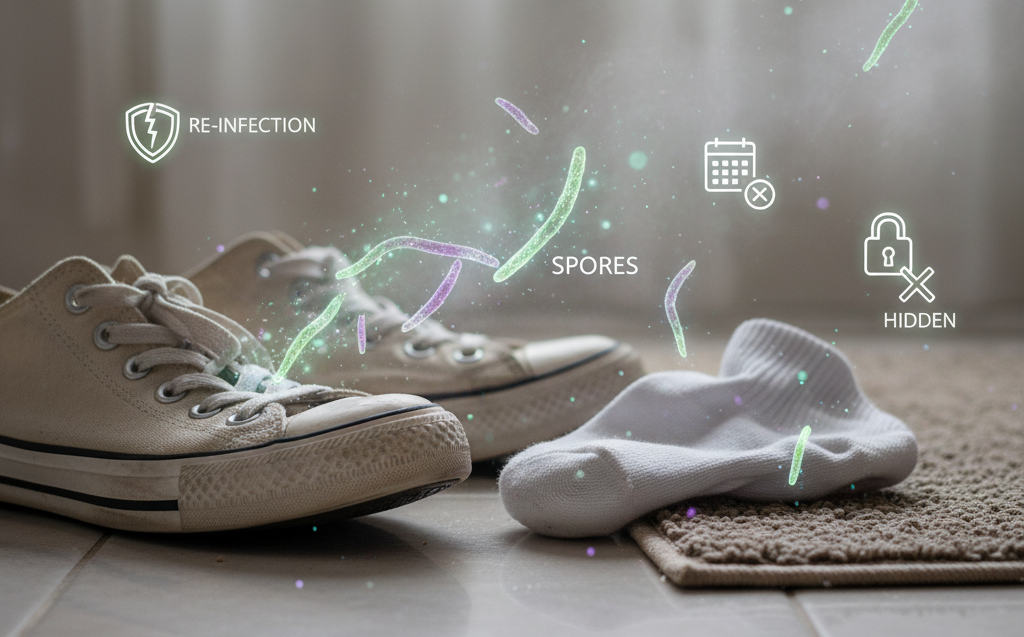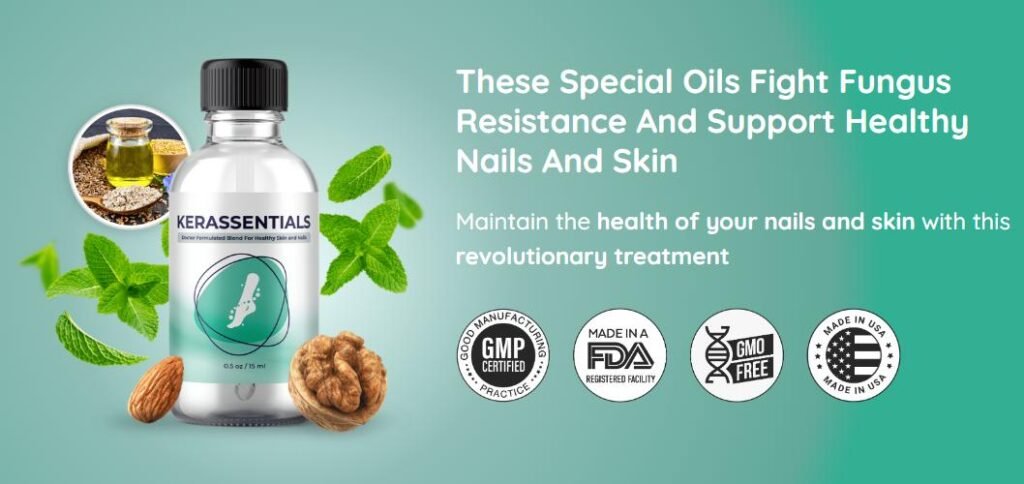
Nail Fungus: Why Treatments Fail (And What Works)
Imagine slipping into sandals on a sunny day, feeling the warm sand between your toes, or simply going barefoot around the house without a second thought. For many, this simple pleasure is overshadowed by the persistent frustration of nail fungus — a condition that affects millions and can turn everyday activities into sources of embarrassment and discomfort.
Nail fungus, medically known as onychomycosis, isn’t just a cosmetic issue. It can lead to pain, mobility problems, and even secondary infections if left unchecked. If you’ve dealt with discolored, brittle nails or that nagging itch from athlete’s foot, you’re not alone. According to the American Academy of Dermatology, up to 10% of the population struggles with this, with rates climbing to 50% in adults over 70.
But here’s the good news: Understanding the root causes and why common treatments often fall short can empower you to find lasting relief. In this in-depth guide, we’ll explore the science behind nail fungus, common pitfalls in treatment, preventive strategies, and natural approaches that support long-term nail health. Let’s dive in and uncover how you can reclaim confident, healthy feet.
“Nail fungus thrives in the shadows of misunderstanding. Knowledge is your first line of defense.”
What Exactly Is Nail Fungus? A Closer Look
Nail fungus starts innocently enough — perhaps after a gym session, a day in damp shoes, or walking barefoot in a public shower. But what begins as a minor annoyance can evolve into a stubborn, chronic infection.
The culprits are fungi like dermatophytes, yeasts (such as Candida), and molds. These microorganisms love warm, moist environments, making your feet — especially inside tight shoes — the perfect breeding ground.
They invade the nail through tiny cuts, cracks, or separations between the nail and the nail bed. Once inside, they feed on keratin, the tough protein that forms your nails. This causes the nail to become:
- Thickened and distorted
- Yellow, brown, or white in color
- Brittle, crumbly, or ragged at the edges
- Sometimes detached from the nail bed (onycholysis)
In many cases, nail fungus comes hand-in-hand with athlete’s foot (tinea pedis) — the itchy, scaly rash between toes or on soles. This creates a vicious cycle: foot fungus spreads to nails, and infected nails reinfect the skin.

Early signs are subtle: a small white or yellow spot under the tip of the nail. Ignore it, and it spreads — sometimes to all ten toes, or even fingernails if you scratch with infected hands.
The Real Impact: More Than Just “Ugly Toes”
Beyond appearance, nail fungus can seriously affect your quality of life:
- Pain & Discomfort: Thick nails press on shoe interiors, causing blisters, corns, or ingrown nails.
- Mobility Issues: Walking becomes painful, especially in tight or heeled shoes.
- Sleep Disruption: Itchy athlete’s foot can keep you up at night.
- Emotional Toll: Many avoid pools, beaches, or open-toe shoes — even in summer.
- Social Withdrawal: Embarrassment leads to hiding feet during intimacy or family gatherings.
Research in the Journal of the American Podiatric Medical Association shows that chronic foot conditions like fungal infections significantly reduce self-esteem and daily functioning — on par with eczema or psoriasis.
Why Do Most Treatments Fail? The Hard Truth
You’ve probably tried at least one of these: antifungal creams, medicated nail polishes, sprays, or even oral pills. Some work temporarily. Most don’t last. Here’s why:
1. They Don’t Penetrate Deep Enough
The nail plate is like a fortress. Topical treatments sit on top but rarely reach the nail bed where fungus hides. Studies show less than 10% of cream ingredients actually penetrate the nail.
2. They Ignore the Environment
Fungal spores can live in your shoes, socks, shower floor, or carpet for months. If you kill the fungus on your nail but not in your environment, re-infection is almost guaranteed.

3. Oral Medications Carry Risks
Prescription pills like terbinafine or itraconazole are more effective but require 3–6 months of use and come with side effects: liver damage, headaches, stomach issues, and drug interactions. Not ideal for everyone.
4. They Don’t Rebuild Nail Health
Even if you clear the infection, damaged nails remain weak and prone to reinfection. Without nourishment, the cycle repeats.
Prevention 101: Stop Fungus Before It Starts
The best treatment is prevention. Build these habits into your routine:
- Keep Feet Dry: Dry thoroughly after bathing — especially between toes. Use a hairdryer on cool if needed.
- Rotate Shoes: Wear different pairs daily. Let shoes air out for 24 hours.
- Use Antifungal Powder: Sprinkle in shoes and socks (talc-free options preferred).
- Wear Breathable Footwear: Leather, mesh, or sandals over plastic.
- Protect in Public: Flip-flops in gyms, pools, hotel rooms.
- Disinfect Tools: Clean clippers with alcohol; don’t share.
- Boost Immunity: Manage blood sugar, eat probiotic-rich foods, reduce stress.
These small changes create an environment where fungus can’t thrive — even if spores land on your feet.
Nature’s Antifungal Arsenal: Science-Backed Ingredients
For centuries, traditional medicine has used plants to fight infections. Modern research confirms many are as effective as synthetic drugs — with fewer side effects.
- Tea Tree Oil: A 2013 study in Journal of Foot and Ankle Research showed it inhibits dermatophytes as well as OTC antifungals.
- Clove Bud Oil: Contains eugenol — disrupts fungal cell membranes.
- Lavender Oil: Soothes inflammation and supports skin healing.
- Flaxseed Oil: Rich in omega-3s; strengthens nail structure.
- Vitamin E: Antioxidant that repairs damaged tissue and improves moisture.

When combined in the right ratios, these create a multi-action formula: penetrate, kill, heal, protect.
My Journey: From Hiding My Feet to Wearing Sandals Again
I know the struggle firsthand. For years, I avoided open-toe shoes. My big toenail was yellow and thick. Athlete’s foot flared every summer. I tried:
- OTC creams → temporary relief
- Vinegar soaks → messy, inconsistent
- Prescription polish → slow, expensive
Nothing stuck. Then I started researching penetration and prevention. I learned that oils — not creams — were key to reaching under the nail. I tested blends, tracked progress, and finally saw real change after 6–8 weeks of consistent use.
Kerassentials: A Natural, Science-Backed Option
After reviewing dozens of natural formulas, one stood out for its thoughtful design and real-world results: Kerassentials.
It’s not a generic antifungal. It’s an oil-based serum engineered to:
- Penetrate Deep: Low-viscosity oils slip under the nail plate to target fungus at the source
- Kill Naturally: Clove, tea tree, and lavender disrupt fungal growth without resistance
- Heal & Strengthen: Vitamin E and flaxseed repair damage and promote healthy regrowth
- Prevent Recurrence: Creates a protective barrier on skin and nails
Kerassentials

Apply a few drops daily after showering. Let it absorb. Pair with good foot hygiene. Results build over weeks — clearer nails, less itching, stronger growth.
Learn More About Kerassentials →
“Healthy feet aren’t a luxury — they’re your ticket to freedom and confidence. With the right knowledge and tools, you can step forward without hesitation.”
*This is my honest recommendation based on personal research, testing, and experience. Results vary by individual. Always consult your doctor before starting new treatments. Not medical advice.*
